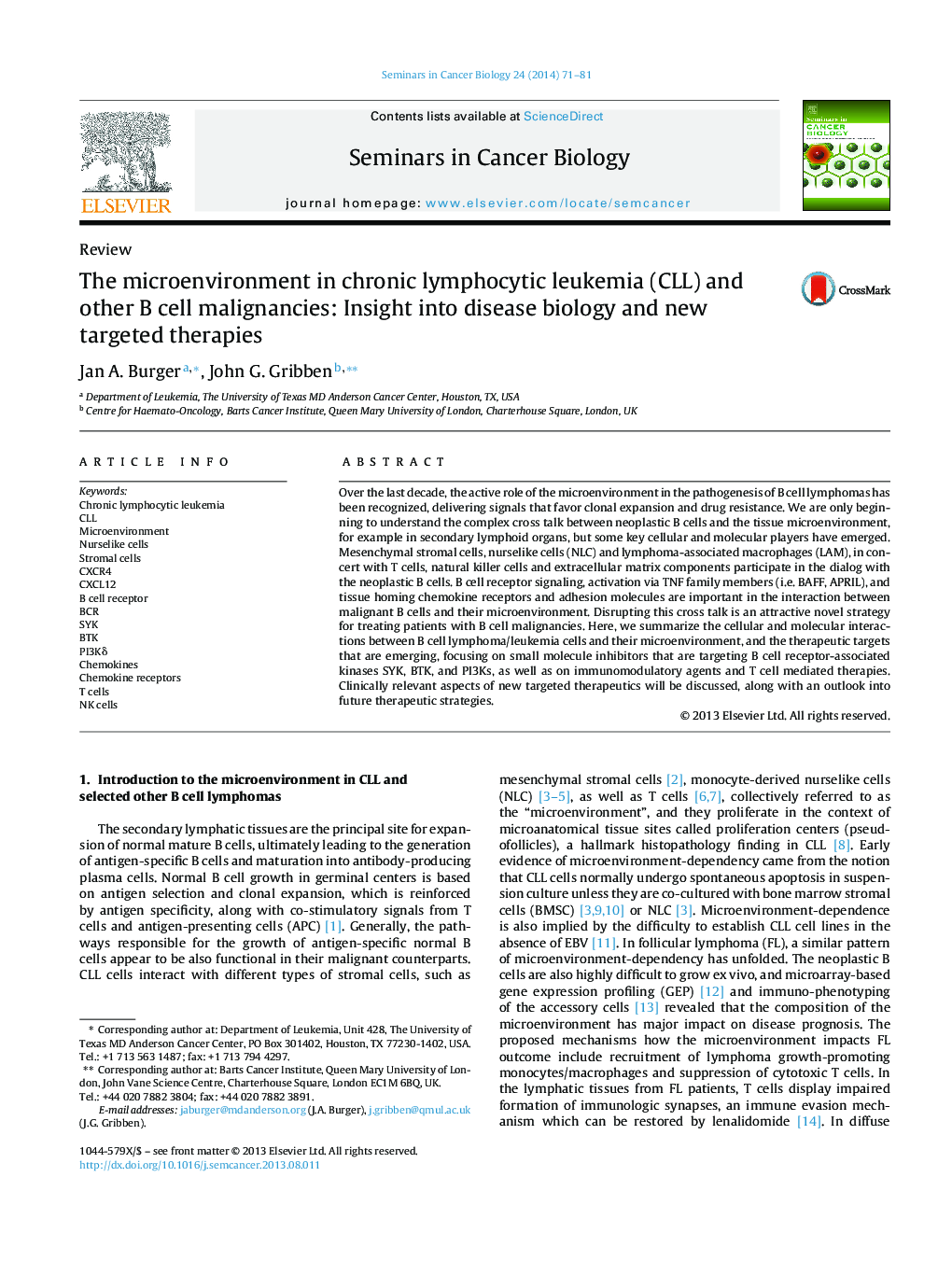| Article ID | Journal | Published Year | Pages | File Type |
|---|---|---|---|---|
| 2023915 | Seminars in Cancer Biology | 2014 | 11 Pages |
Abstract
Over the last decade, the active role of the microenvironment in the pathogenesis of B cell lymphomas has been recognized, delivering signals that favor clonal expansion and drug resistance. We are only beginning to understand the complex cross talk between neoplastic B cells and the tissue microenvironment, for example in secondary lymphoid organs, but some key cellular and molecular players have emerged. Mesenchymal stromal cells, nurselike cells (NLC) and lymphoma-associated macrophages (LAM), in concert with T cells, natural killer cells and extracellular matrix components participate in the dialog with the neoplastic B cells. B cell receptor signaling, activation via TNF family members (i.e. BAFF, APRIL), and tissue homing chemokine receptors and adhesion molecules are important in the interaction between malignant B cells and their microenvironment. Disrupting this cross talk is an attractive novel strategy for treating patients with B cell malignancies. Here, we summarize the cellular and molecular interactions between B cell lymphoma/leukemia cells and their microenvironment, and the therapeutic targets that are emerging, focusing on small molecule inhibitors that are targeting B cell receptor-associated kinases SYK, BTK, and PI3Ks, as well as on immunomodulatory agents and T cell mediated therapies. Clinically relevant aspects of new targeted therapeutics will be discussed, along with an outlook into future therapeutic strategies.
Keywords
Related Topics
Life Sciences
Biochemistry, Genetics and Molecular Biology
Biochemistry
Authors
Jan A. Burger, John G. Gribben,
